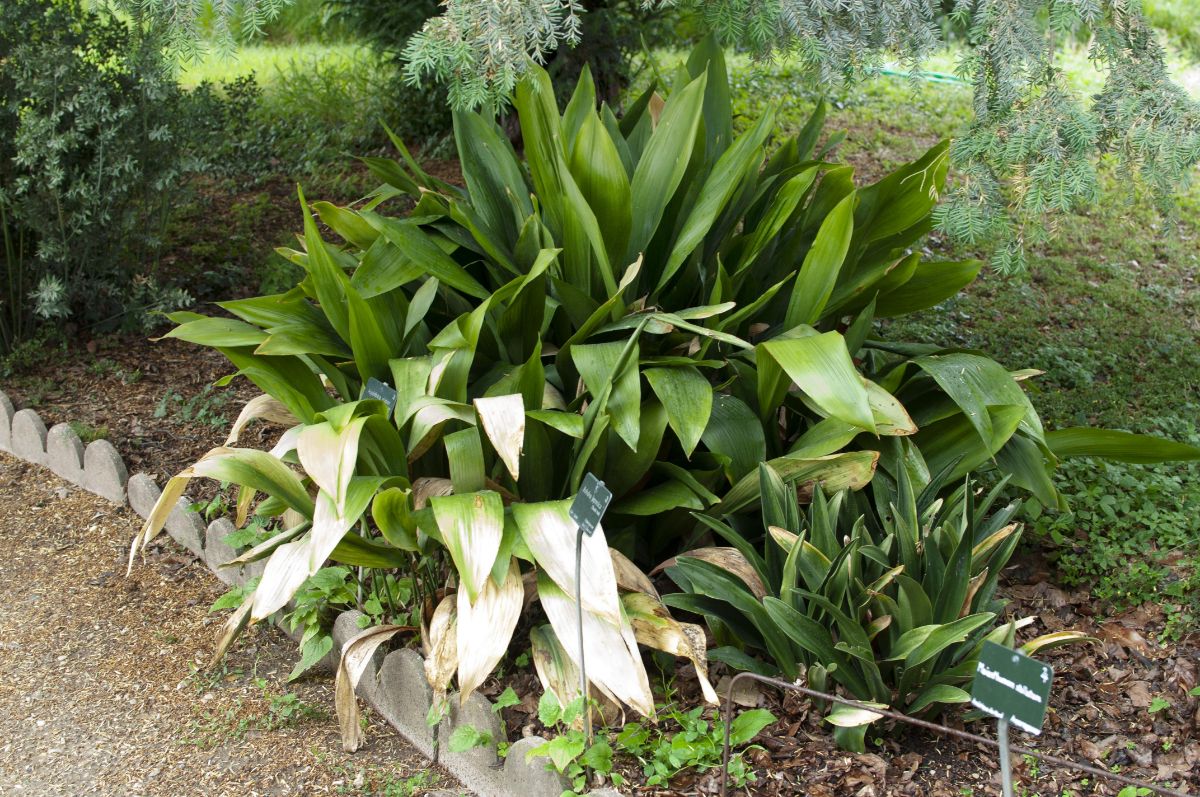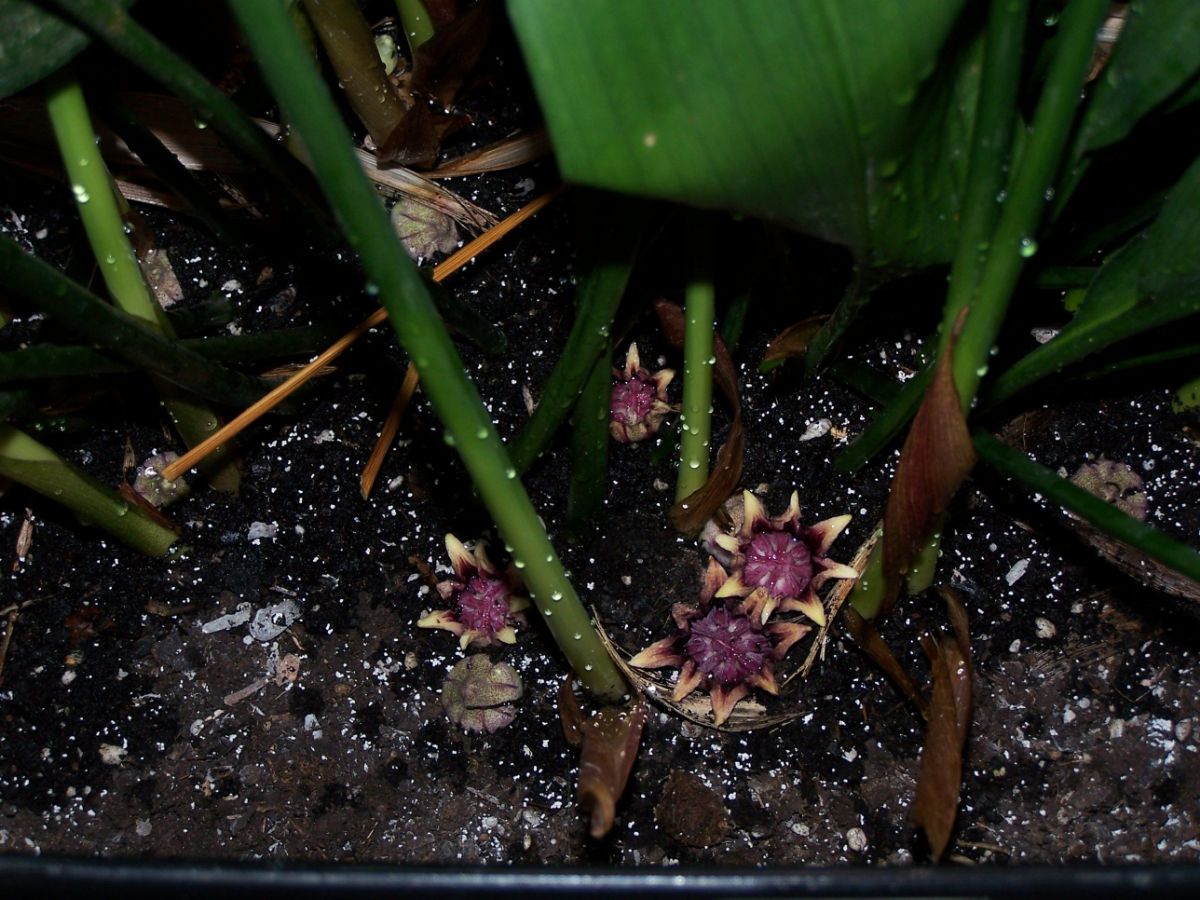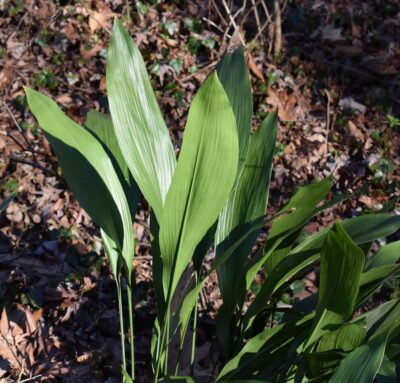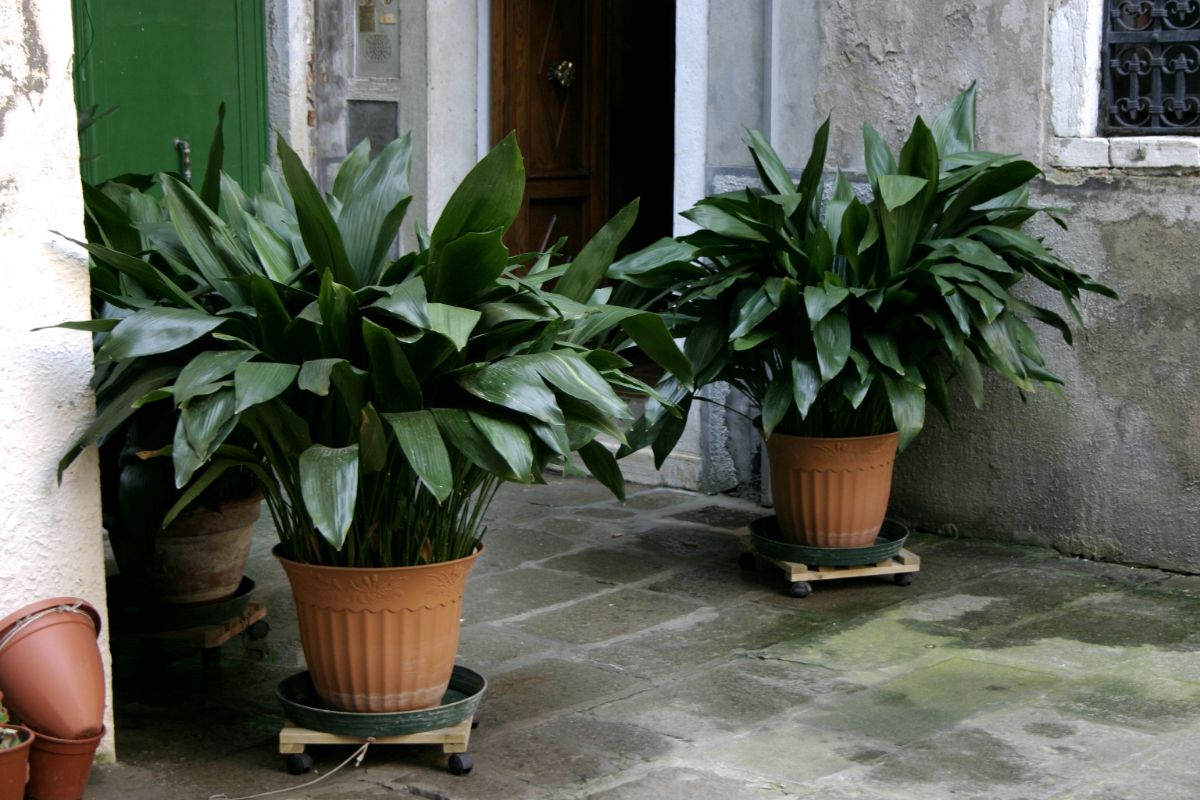
If you like indoor plants and have managed to get a good collection of widely used plants, you will have the aspidistra. His care is not demanding at all and it has become one of the queen plants of all homes.
Although it can also be kept in patios, it is a very easy plant to care for and recommended for beginners or those who do not have time to plant. But how to take care of it?
How is the aspidistra

Before talking to you about the care of the aspidistra, it is best that we tell you a little about what it is like. scientific name Aspidrister Elaatior, this plant goes like fashions: it has a season that is the queen and that everyone loves it, and another in which it goes unnoticed and nobody puts it in their house.
Es pet friendly, that is, it will not harm your pet nor is it toxic.
But the most characteristic and striking thing about the plant is that it can grow in low humidity and low light. Even if you forget about it, it will still be alive when you remember. In fact, it is said that she is capable of living for more than 100 years.
You have green leaves variegated and oval or lanceolate. What is striking about these is not their color, but how long they can be (up to 70cm). Dan flowers, dark red, and these are very nice to see but it has a problem and that is that, unless you have it outside, it is very difficult for it to flourish inside the house. Still, it can happen. And after the flowers come the fruits. They are like black berries where, inside, it keeps the seeds.
Su Origin is in Japan although other species of the genus are found in China. All of them arrived in Europe in the XNUMXth century and since then they have always been present in home decoration.
Aspidistra: care to provide

If you want to know the care of the aspidistra we are not going to make you wait and here we present them to you. It is a plant that, as we have told you before, is very easy to care for and will last a long time. But it is always better not to overdo it and mistreat it.
Location
As we have started this article, you will assume that it is a houseplant. However, in the right conditions, you may have it outside the house, on a balcony, patio, terrace... Actually, the plant survives in both a light and full shade zone. The only thing it does not tolerate is direct sun, because it can burn its leaves.
Its ideal would be to be in an area with indirect lighting, because if you have it in the shade, the leaves lose that special shine.
Temperature
The ideal temperature to provide in the care of the aspidistra they are around 10-13 degrees. That would be your ideal. However, although it tolerates a little heat, it is not its forte. Neither is the cold. Beyond 5 degrees it begins to suffer. For this reason, it is recommended to protect it in winter, taking care not to place it in areas too close to the heating.
Substratum
If you want your aspidistra to grow well, the substrate is an important part of its care. And it is because it is the one that will make it develop correctly.
Therefore, our recommendation is that you use a soil mixed with beech leaves, peat and sand. This will serve as both soil and drainage and you will avoid problems in its growth.
Transplant
Related to the above, you should keep in mind that you have to change the pot (and the substrate) every 2-3 years. This will tell you when you notice that all the roots take up the space in the pot.
If that happens, and they also come out from the bottom, it's time to transplant it. It is always done from March to April; We do not recommend that you do it before or after unless it is an emergency.

Irrigation
Among the most important care for the aspidistra, irrigation is perhaps the main one. And one of the biggest mistakes made.
To start, you should know that if you put too much water on it, you will turn the leaves brown and may rot (in addition to the roots). So it is better to water it little but more times.
Is better wait for the substrate to dry to water it and moisten it environmentally than to water too much. How much then? It may be once or twice in summer and once every 15-30 days in winter. It will depend on how long it takes for the soil to dry out because that will be the signal that it needs water.
Fertilizer
During the spring and summer months you can pay the plant once a month. It is important that you use a fertilizer that is very rich in nitrogen.
You can go liquid or solid, but we do recommend that you use a little less than the amount specified by the manufacturer, because the plant will thank you.
Pruning
Aspidistra is not normally pruned. but it is true that when the leaves dry and giving rise to others, you will have to remove them from the pot to prevent them from generating diseases or pests.
Beyond this, there is not much else to do.
Plagues and diseases
In this regard, and taking into account that irrigation can be the main cause of death of this plant, the truth is that root rot is one of the most common diseases.
From pests you have to be careful with the Woodlouse. As a solution, in addition to removing them from the plant, it is to use water and soap to wash the plant and antiparasitic if it is especially outdoors.
Another pest to contain will be the Red spider that you can remove with moisture; or the aphids, that will disappear with a specific insecticide for plants.
Multiplication
According to what we have said before, the aspidistra gives seeds (as long as it blooms) but the most used method to reproduce it is through the division of rhizomes.
This is done together with the transplant, cutting the rhizomes. Each of them must have at least 2-3 leaves and some good roots for it to succeed.
Those cuts, before replanting, should be treated with fungal products that are rich in sulfur.
Then they are all planted and kept in the shade for a few days (the adult specimen) and until they throw a new leaf on the new rhizomes.
Do you dare to have an aspidistra and give it the care it needs?